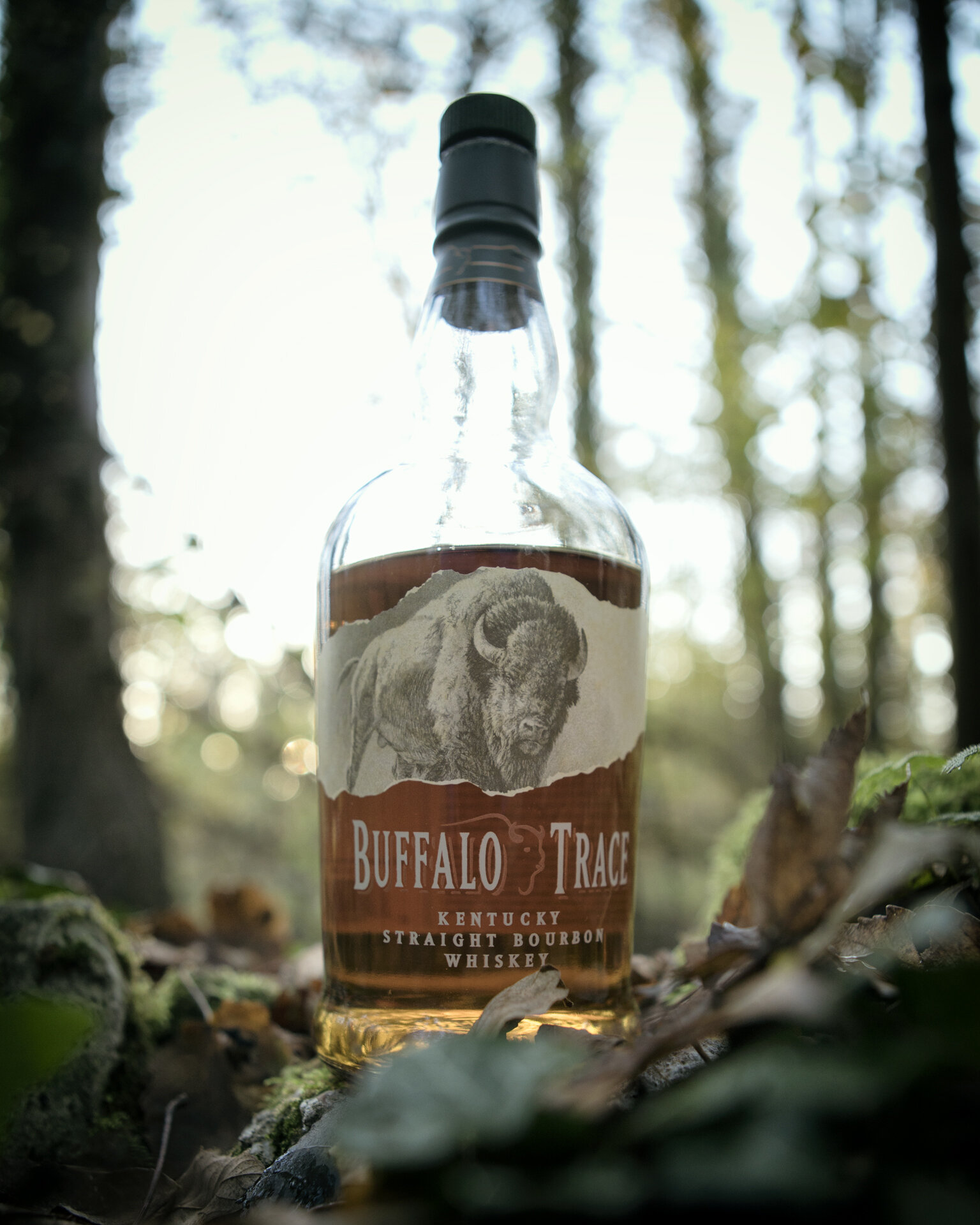Bourbon Season 2020 - Part 2 // Buffalo Trace Kentucky Straight Bourbon Whiskey
After a rather busy week, it’s time to continue the “Bourbon Season 2020” series with the next expression: Buffalo Trace Kentucky Straight Whiskey. I bought this bottle during the preparation phase of this series, simply because it looked like an interesting bottle, and the price/quality ratio supposedly can’t be beaten. In this review, I’ll focus on the expression, obviously, but also on what “Kentucky Straight” stands for. Sit back, pour yourself a dram, and enjoy!
Text by Mickaël Van Nieuwenhove
Photography is © Reinhold Podevijn
In a previous post, I explained the reason for the “Bourbon Season 2020” series, and I must say that this Buffalo Trace expression certainly fueled my interest in exploring the world of bourbon whiskey a bit better. What I did not mention in the previous post, is that the Eagle Rare brand is owned by the Buffalo Trace Distillery, which also produces Sazerac Rye, Weller, and of course Buffalo Trace. Besides these brands, there are many more products to explore in their portfolio, but since they are harder to find ‘overseas’ in Belgium, I’m focusing on the aforementioned.
Kentucky Straight Bourbon Whiskey
My bottle of Buffalo Trace reads “Kentucky Straight Bourbon Whiskey”. In the last post, which you can read here, I explained what “bourbon” and “whiskey” stand for, and in this post, I’ll focus on “Kentucky” and “Straight”.
I’ll start by explaining “straight”. A ‘straight' whisk(e)y' means that this spirit, according to the United States law, is ‘distilled from a fermented cereal grain mash’, and that the distillation process did not exceed the mark of 80% abv (alcohol by volume) (Wikipedia). Additionally, the whisk(e)y '“must be aged in a brand-new, charred white oak barrel” (cnbc.com), which means that barrels cannot be re-used, but must always be new. Luckily, these used barrels are not thrown out, but most are sold to the whisky industry overseas, which use them for their own maturation process.
It seems that the “straight” label is simply added to the “bourbon” name, and that it has the same requirements as the “bourbon” label. At least I thinks so. Correct me if I’m wrong! These things tend to get confusing after a second glass of bourbon…
Next up, the “Kentucky” label. Now this is a bit more interesting. A quick google (verb) reveals that the origin of “bourbon” is not as simply and straight-forward (hehe) as assumed. The origin of bourbon distillation is not set in stone, and it ‘more or less happened without anyone taking notes’. Some (historians) connect the ‘birth of bourbon’ to Elijah Craig, a Baptist minister and distiller, who supposedly introduced the practice in Kentucky. Others state that across the county line, Jacob Spears, from Bourbon County (what’s in a name) was the first to put “Bourbon whiskey” on his labels.
But then there’s also the Bourbon Dynasty, a French dynasty related to the Royal Capetian dynasty, which provided kings in 16th century France and Spain. Because of the colonization of the Americas, this dynasty also got a foothold in the Kentucky area in the 18th century. Don’t believe me? It’s all on Wikipedia…
Nevertheless, it is safe to say that bourbon distillation was started in the late 18th century in Kentucky, and it has been a product a lot of people from Kentucky are proud of. And because other states also have their own bourbon production, the “Kentucky” label still indicates the “Kentucky style” of bourbon distillation.
Buffalo Trace Bourbon Whiskey
I bought this bottle specifically because it was recommended to me as an excellent price/quality bourbon. Simple, straightforward, good quality and good value for money. It has since moved to the front of my drinks cabinet as an ‘everyday bourbon’, offering enough flavors and scents to be enjoyed without having to sit down and analyze a complex pattern of tasting notes.
The Buffalo Trace bourbon has lovely milk chocolate in the nose. It is oaky, with some vanilla notes and some caramel too. There are notes of tangerines, which make this a little bit more interesting. This spirit has a very soft, silk-like texture. Pure and straightforward, with notes of vanilla and a little bit of spice in there, some caramel there too, right at the back a ‘greener, fresher’ note. There’s some brown sugar going up the nose, right at the beginning. The finish is medium short, evaporating rather quickly and leaving a simple note of sweetness, crystalizing on the tongue.
At 40% ABV, this bourbon is soft, easy-going, and an ‘easy sipper’. Perfect as an introduction to bourbon, and a good dram to combine with for example a cigar, as the flavor profile is easy to combine with similar patterns. As mentioned in the introduction, the price/quality ratio simply can not be beaten by other brands. If you want to try out this bourbon, it won’t burn a hole in your wallet, and it will offer up a good introduction to what bourbon is like. Bonus: it doesn’t have that sharp nose or initial flavor that is common in a lot of bourbons.



